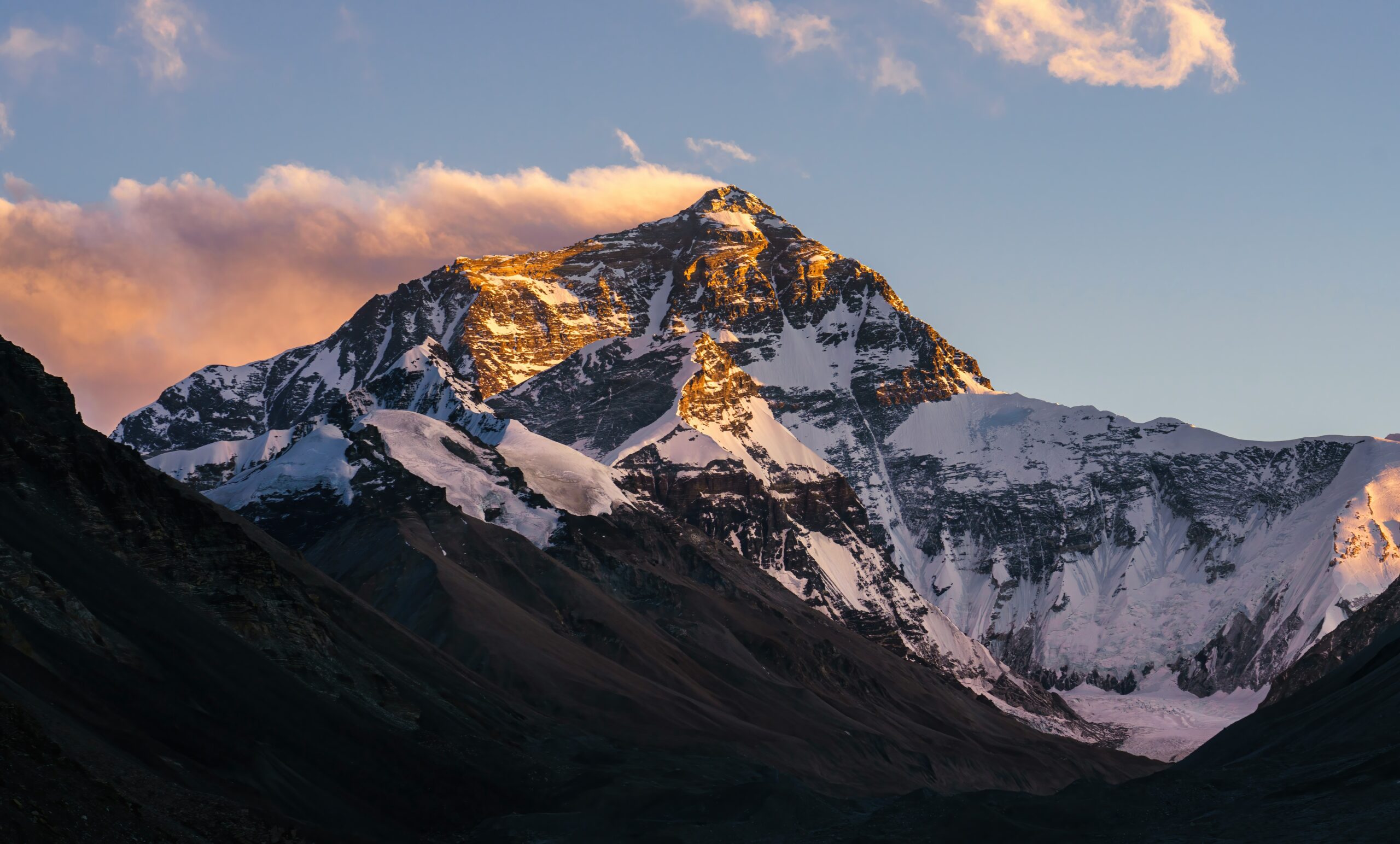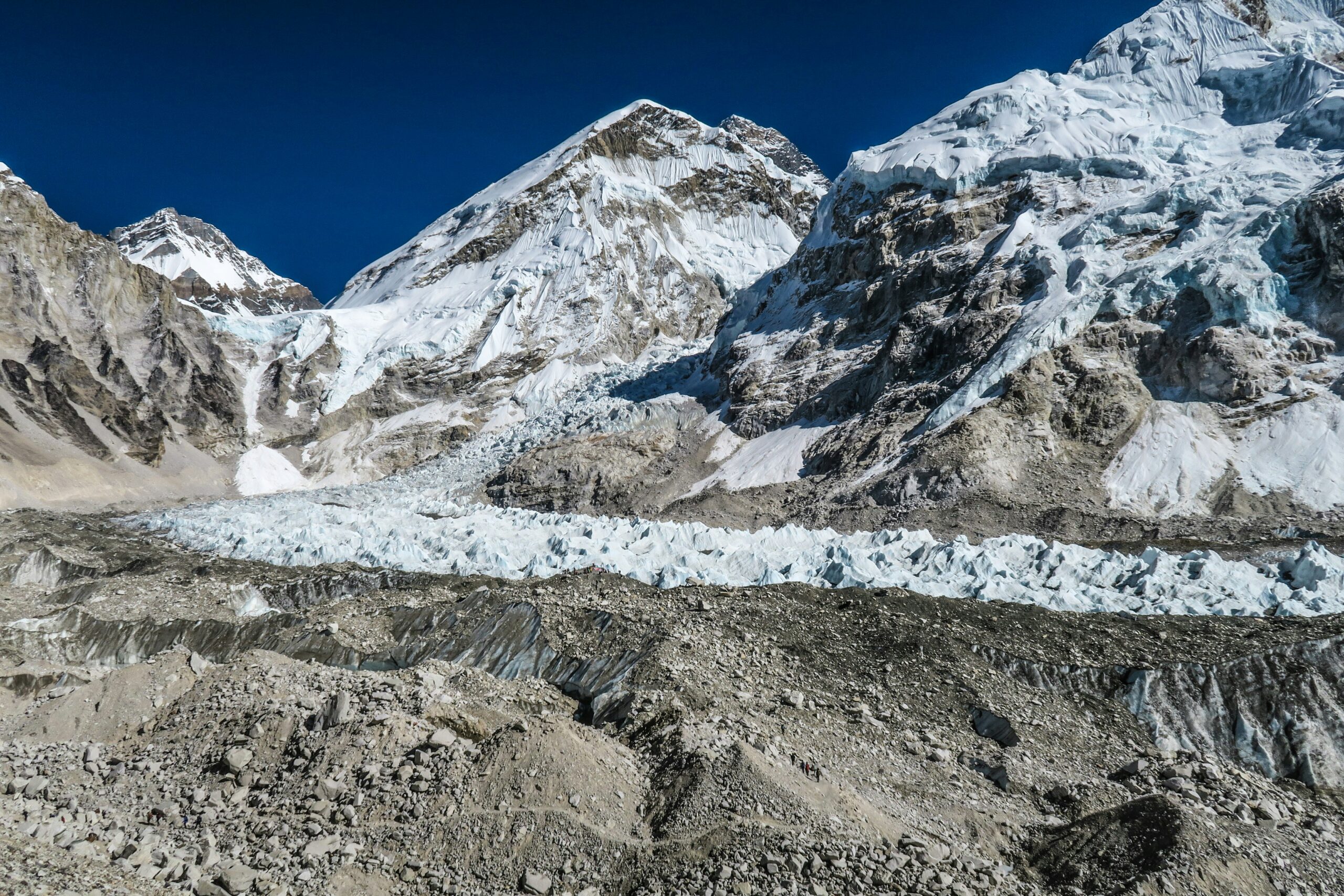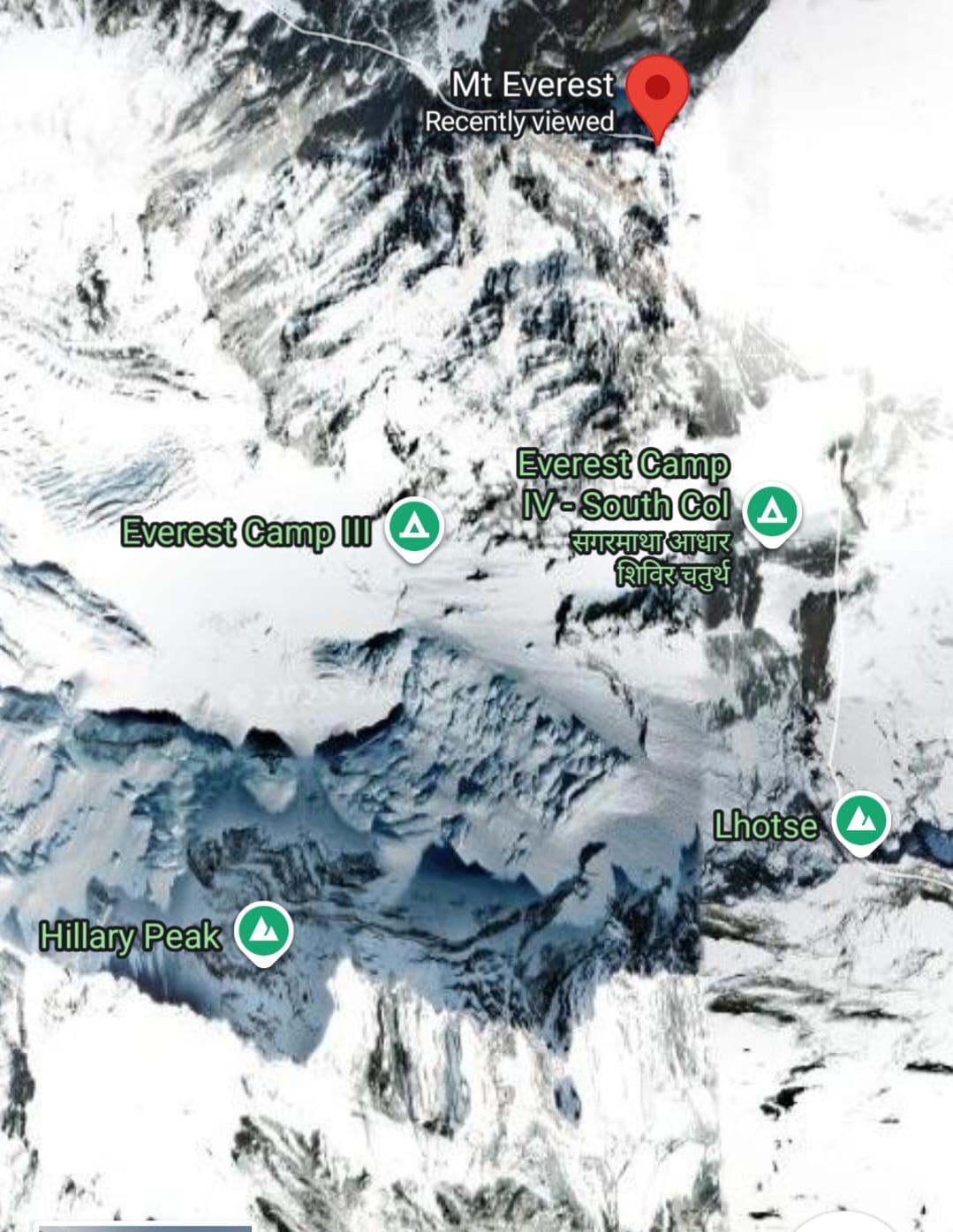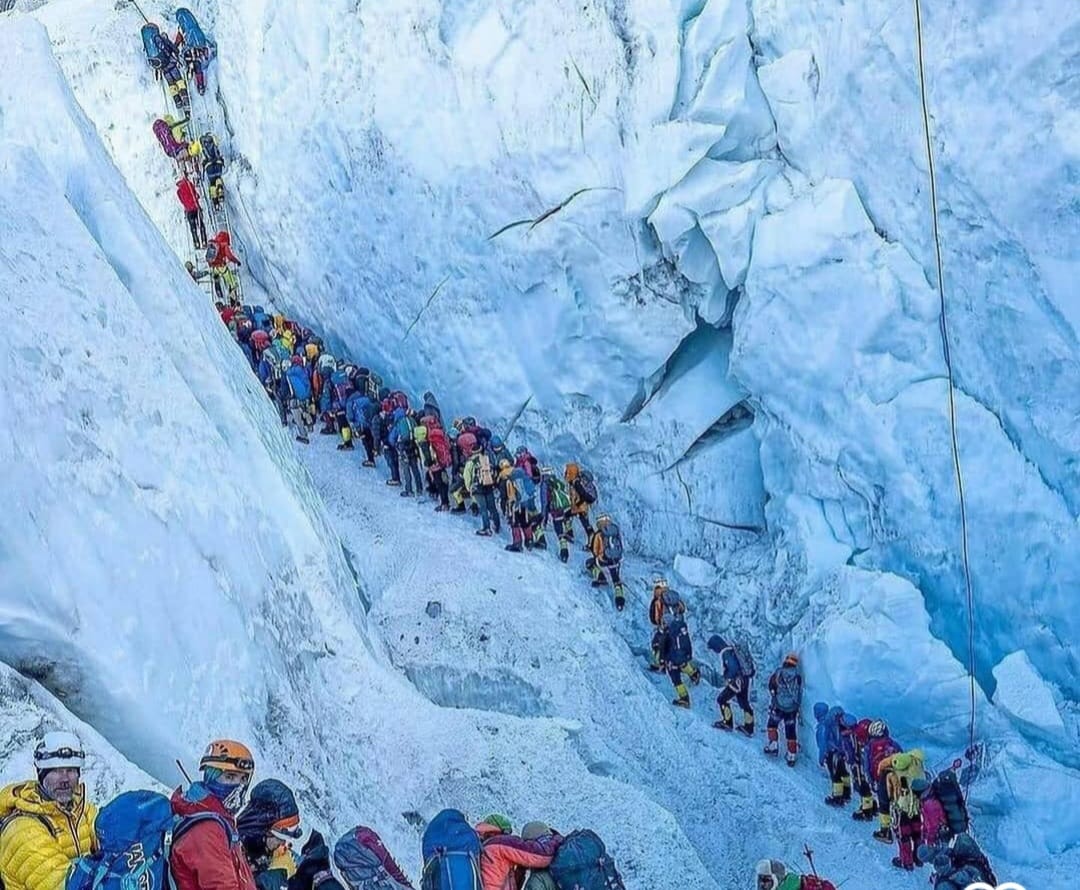Mt Everest | Altitude, Location, Route, Permits, Best time

Introduction: The Roof of the World’s Enduring Allure
Mount Everest, the tallest mountain on Earth, has always been the object of fascination among travelers, adventurers, and dreamers. Soaring above the clouds in its snowy summit, Everest is not only a mountain, but an international symbol of beauty, force, and challenge.
Mount Everest, which is referred to as the Roof of the World, is the ultimate representation of human will and the rawness of nature. World climbers aspire to the peak, and still others enjoy the spectacular vistas of the summit, safely ensconced in the valleys below. You can regard it as a spiritual monument or a goal to be achieved by climbing, but Everest remains fascinating to millions.
What you are going to discover in this guide are some very crucial facts about Mount Everest, such as the height and the location of the mountain, the history of climbing expeditions, dangers and challenges of climbing the mountain, and some of the most amazing facts and records that make Everest really one of its kind.
Mount Everest: Location, Height, and Basic Identity
Location & Surroundings:

Mount Everest is in the gigantic Himalayas in the world which is the tallest mountain range. It is located in the Solukhumbu District of Nepal, within the Sagarmatha National Park. Mt Everest shares the border between Nepal and Tibet. The mountain is known in Nepal as Sagarmatha (meaning goddess of the Sky) and in Tibet as Chomolungma (meaning Mother Goddess of the World). This duality brings out the cultural and spiritual significance of Everest to the people of the two regions.
Everest does not stand alone in a magnificent way. It is enclosed by other high Himalayan mountains, including Lhotse (8,516 m), Makalu (8,485 m), and Cho Oyu (8,188 m). Dramatic glaciers, deep valleys, and rough ridges also characterize the region and make it one of the most spectacular landscapes on Earth. On the south side is the Khumbu Valley in Nepal, the base of numerous trekking and climbing expeditions.
Altitude & Measurement:
Mount Everest is the actual highest mountain in the world, which is officially recorded to be 8,848.86 meters (29,031.7 feet) above sea level. Nepal and China agreed on this new height in 2020 and confirmed the true altitude of the mountain following years of controversy and contemporary re-surveys.
The Everest story dates to the 19th century. The initial measurement of the mountain took place as part of the Great Trigonometric Survey of India in the 1850s, presided over by surveyor Sir George Everest; the peak was subsequently named after him. Initial estimates put the mountain at a height of approximately 8,840 meters. In the following decades, various surveys by India, China, and international groups gave slightly different results owing to snow cover, drifting tectonic plates, as well as the improved technology. The latest survey through state-of-the-art GPS and radar technology ultimately established the height to be 8,848.86 meters, which is the figure used worldwide today.
Mapping the Giant:

On a world map, you will find Mount Everest right in the centre of Asia, on the Nepal-Tibet border (China). You can even see on a small local map that Everest is located in the Mahalangur Himal of the Himalayas. Maps in this region usually point at the southern approach of the Khumbu region in Nepal, as well as the northern approach of Tibet, the two key routes that climbers take when heading to the summit.
A closer look at Everest’s regional map reveals the mountain’s most famous features:
- The Khumbu Icefall is a dangerous maze of ice towers and crevasses along the south side.
- Western Cwm is a wide glacial valley referred to as the Valley of Silence.
- The South Col and Northeast Ridge, the two main climbing routes leading to the summit.
- Large glaciers such as the Khumbu Glacier (Nepal side) and the Rongbuk Glacier (Tibet side) cascade along the mountain slopes.
From Myth to Measurement: A Brief History of Everest
Naming the Peak:
Mount Everest has local names. In Tibet, it is referred to as Chomolungma, meaning mother goddess of the World. In Nepal, it is referred to as Sagarmatha, which translates to the goddess of the Sky. Both names demonstrate the tremendous religious and cultural significance of the mountain to the locals who inhabit the Himalayan region.
British surveyors discovered in the 19th century during the Great Trigonometric Survey of India that the mountain was the tallest place on Earth. This was subsequently called Mount Everest after Sir George Everest, Surveyor General of India. Though Sir George himself never set his eyes on the mountain, the name was a popular one in the Western World, though the native local names have not lost their significance.
Early Expeditions & Attempts:
Initial serious efforts to scale Mount Everest date back to the early 1900s. As Nepal was not open to outsiders at the time, expeditions went to the mountain on the Tibetan side. The British Reconnaissance Expedition in 1921 charted out potential routes and provided climbers with their initial detailed view of the slopes, ridges, and glaciers of Everest. This was preceded by efforts in 1922, when mountaineers made it as far as 8,320 meters (27,300 feet), the highest elevation that a person had ever climbed. All these initial expeditions provided the base of the subsequent ones, although none of them succeeded in reaching the peak.
One of the most well-known tales about Everest was the 1924 trip organized by George Mallory and Andrew Irvine. June 8, 1924, was the day when the two climbers dared to go toward the summit and never came back. It is one of the biggest mysteries of mountaineering to know whether they made it to the top before they died or not. In 1999, Mallory was found dead, but Irvine was not. The question: Did they make it to the summit first? – remains one of the most interesting inquiries to historians, climbers, and Everest fans all over the World.
The First Ascent:
Sir Edmund Hillary of New Zealand and Tenzing Norgay, a Sherpa of Nepal, became the first climbers to reach the summit of Mount Everest, May 29, 1953. It took years of planning, failure, and experience from past expeditions to ensure their successful ascent. With bravery, expertise, and cooperation, they reached the peak of the earth (8848 meters -29029 feet) and changed the history of mountaineering forever.
The summit in 1953 was not only a victory in climbing. It was considered the icon of human solidarity and global collaboration. In the case of Nepal, it opened Nepal and the Sherpa people to the World. To the World, this was a demonstration that nothing was impossible to achieve with a will. The victory of Hillary and Tenzing turned Mount Everest into a world symbol and motivated generations of climbers and adventurers to be like them.
Everest Climbing Routes: A Climber’s Journey to the Everest Summit
The South Col Route (Nepal Side):
The most common and used way to the summit of Mount Everest is the South Col Route. The Everest climbers start at Everest Base Camp, located in the Khumbu region of Nepal at 5364 meters above sea level, and then proceed to well-known features of the mountain, such as Khumbu Icefall, Western Cwm, Lhotse Face, and then the last destination is South Col before attempting their summit push. It was Edmund Hillary and Tenzing Norgay who used this route successfully in 1953, and now, most climbers prefer to use this route since most of the camps, logistics, and support have been established.
The North Ridge Route (Tibet Side):
The North Ridge route begins in Tibet (China) and is ranked as the second most popular method to ascend Everest. Climbers come in via the Rongbuk Glacier and climb the mountain up through the North Col and then the difficult Northeast Ridge. This is a route of high historical importance because it was used in the early British expeditions of the 1920s and 1930s. While technically less steep in some sections compared to the South Col, it is often considered more dangerous due to high winds, exposure, and fewer rescue options.
Other Less Common Routes:
Among these two popular routes, there are more than 15 named routes that lead to the Everest summit, but due to more technicality, these routes are extremely challenging and rarely used.
The Brutal Reality: Dangers and Deaths on Everest
The Everest “Death Zone” Explained:
Within Mount Everest, there is a very dangerous region called the Death Zone. This is defined as anything that is at an altitude higher than 8,000 meters (26,000 feet) above sea level and which the human body cannot endure. The body starts to wear out quickly in such an extreme environment, regardless of the fitness or readiness of a climber. This is because the Death Zone is the last and most perilous of all the stretches to the summit, and therefore it poses one of the greatest challenges in high-altitude mountaineering.
The primary threat of the Death Zone is the extreme shortage of oxygen. The oxygen content is only a third of that at sea level in these heights, resulting in hypoxia or a lack of oxygen in the body and the brain. It is characterized by dizziness, loss of consciousness, inability to make good decisions, extreme fatigue, and unconsciousness in severe cases. In the absence of supplemental oxygen and appropriate acclimatization, survival is almost impossible. That is why the Death Zone frightens even the most professional climbers.
Common Causes of Fatalities:
- Altitude Sickness (HACE, HAPE).
- Frostbite and hypothermia.
- Falls, avalanches, and serac collapses (e.g., Khumbu Icefall).
- Exhaustion and exposure to extreme weather.
Statistics and the Human Cost:
Climbing Mount Everest is one of the greatest achievements in mountaineering, but it comes with a high human cost. The mountain has claimed the lives of many climbers, and it continues to pose serious dangers each year.
| Category | Details |
| Number of Deaths | Over 310 climbers have died on Mount Everest since the first attempts in the 1920s. The death rate has decreased with better gear and support, but fatalities still occur almost every climbing season. |
| Bodies on the Mountain | Due to the extreme conditions in the Death Zone, it is often impossible to bring down bodies. Many climbers remain on Everest, serving as grim reminders for others. This raises ongoing ethical debates about rescue vs. safety. |
| Famous Tragedies | – 1996 Disaster: A sudden storm killed 8 climbers in one day, later detailed in books and films. – 2014 Avalanche: An icefall avalanche killed 16 Sherpas near Base Camp. – 2015 Earthquake: Triggered an avalanche that struck Base Camp, killing 22 people. |
| Close Calls | Many climbers have narrowly survived severe frostbite, altitude sickness, and exhaustion. Some have been rescued with great difficulty by fellow climbers or Sherpas, often at huge personal risk. |
Famous People who Died on Everest
| Name | Nationality | Year of Death | Details |
| George Mallory | British | 1924 | Disappeared with Andrew Irvine during their expedition; body found years later. |
| Andrew Irvine | British | 1924 | Mallory’s climbing partner disappeared alongside him; remains never recovered. |
| Rob Hall | American | 1996 | Leader of the Adventure Consultants expedition; died near the summit during the 1996 disaster. |
| Scott Fischer | American | 1996 | Organizer of the Mountain Madness expedition; died due to exhaustion and harsh weather during the 1996 disaster. |
| Yasuko Namba | Japanese | 1996 | Member of Adventure Consultants team; died from adverse conditions near the summit. |
| Francys Arsentiev | American | 1998 | Known as “Sleeping Beauty”; first American woman to summit without supplemental oxygen; died on descent. |
| David Sharp | English | 2006 | Died near the summit; controversy arose as other climbers passed him while he was dying. |
| Green Boots | Indian | 1996 | A famous landmark on the Northeast Ridge, believed to be Tsewang Paljor, died during the climb. |
Beyond the Summit: Fascinating Facts and Enduring Legacy
Geology & Formation:
The Himalayas and Mount Everest were created some 50 million years ago, when the Indian Plate crashed against the Eurasian Plate and lifted the crust of the Earth. The region is also geologically active as the mountains continue to rise slowly with each passing year.
The existence of fossils of marine life such as seashells and corals in high altitudes on Everest indicates that the region must have had a previous ocean cover.
Record Breakers & Milestones:
Youngest person to climb: Jordan Romero(13 years, 10 months, 10 days old) from USA
Oldest person to climb: Yūichirō Miura (b. 1932) from Japan
First person to climb without supplemental oxygen: Reinhold Messner of Italy and Peter Habeler of Austria
Highest number of times to reach the summit: Kami Rita Sherpa from Nepal
Most summits without supplemental oxygen: Ang Rita from Nepal
Fastest ascent from South Base Camp with supplemental oxygen: Lhakpa Gelu Sherpa from Nepal
Fastest ascent without supplemental oxygen and fastest ascent from North Base Camp: Hans Kammerlander from Italy
Fastest woman to climb the summit: Phunjo Jhangmu Lama(14 hours 31 Minutes) from Nepal
Mount Everest Climbing Season
Climbing Mount Everest is only possible during certain times of the year due to extreme weather conditions. The main climbing seasons are:
Pre-Monsoon (Spring): Late April to early June is the most popular time. The weather is relatively stable, snow conditions are better, and winds at the summit are lower, making it the safest window for climbers.
Post-Monsoon (Autumn): Late September to early November is the second climbing season. Conditions are cooler, and there are fewer climbers, but the weather can be less predictable with occasional storms.
Climbers avoid the monsoon season (June to September) because heavy snowfall increases avalanche risk, while winter (December to February) brings extreme cold and dangerous winds.
Tip: Most successful summits happen in May, when temperatures, wind speed, and daylight hours are optimal for climbing.
Mount Everest Climbing Permits Cost: Updated
| Season | Foreign Climbers (Normal South Route) | Nepali Climbers (Normal Route) |
| Spring (Mar–May) | $15,000 USD | NPR 150,000 |
| Autumn (Sep–Nov) | $7,500 USD | NPR 75,000 |
| Winter & Monsoon (Dec–Feb; Jun–Aug) | $3,750 USD | NPR 37,500 |
Note: Fees are per person and apply to the standard South Col route. Other routes may have different fees.
Key Updates for 2025
- Permit Fee Increase: The spring season fee for foreign climbers has risen from $11,000 to $15,000, marking a significant hike.
- Nepali Climbers: The fee for Nepali climbers on the normal route has doubled from NPR 75,000 to NPR 150,000.
- Mandatory Guides: New regulations require that every two climbers must hire one guide for expeditions on peaks above 8,000 meters.
- Insurance Requirements: Climbers must have death repatriation insurance with a minimum coverage of NPR 5 million (approximately USD 37,593).
How Climbers Impact the World’s Highest Peak

You might have read about traffic jams on Mount Everest in climbing season, and it is not a joke; long queues of climbers waiting close to the summit really have real consequences on the mountain.
How can we contribute to protecting it?
- Follow “Leave No Trace” Principles: Climbers and trekkers are expected to take all the trash back to Base Camp or a lower altitude. This consists of empty oxygen containers, food packaging, and other equipment.
- Use Eco-Friendly Gear: As much as possible, use biodegradable or reusable equipment. Use alternatives to single-use plastics and toxic chemicals that may contaminate snow and ice.
- Support Cleanup Expeditions: Even though you are not directly involved in the cleaning campaign, you can contribute by donation to the cleaning campaign, which is organized by local NGOs, climbers’ associations, and trekking companies.
- Respect Local Guidelines: Follow all the rules and regulations set by the Nepal government for climbing if you are heading on an expedition.
- Raise Awareness: You can share about the importance of protecting the Himalayas, like Everest, with friends, fellow climbers, and online communities. Awareness encourages responsible climbing and protects the “Roof of the World.”
Frequently Asked Questions(FAQs)
What is the altitude of Mt. Everest?
- The altitude of Everest is 8848m.
What is the new height of Mt. Everest?
- In December 2020, China and Nepal jointly declared that the official new height of Everest is 29,031.69 feet (8,848.86 meters).
Mount Everest’s height in miles
- 5.498 mi.
Mount Everest’s height in feet
- 29,031 ft 8+1⁄2 in.
Where is Mount Everest Located?
- Mount Everest is located in the Solukhumbu District of Nepal, within the Sagarmatha National Park.
Is Mount Everest Safe to Climb?
- Climbing Mt Everest is very, very dangerous due to risk factors like avalanches, falls, altitude sickness, frostbite, and extreme weather.
Who discovered Mount Everest?
- No one discovered Mount Everest, but it was named after British surveyor Sir George Everest.
How Much Does it Cost to Climb Mt Everest?
- Climbing Mt Everest can cost from $50,000 to $1,00,000 or even more.
How much does it cost to climb Mt. Everest for a Nepalese?
- For Nepali citizens, it can cost around 10 lakh or even more.
What is the 2 pm rule on Mount Everest?
- The 2 pm rule on Mount Everest is an important safety guideline for climbers. It says that if you have not reached the summit by 2:00 pm, you should turn back immediately, no matter how close you are.
How many people have died climbing Mount Everest?
- As of early 2025, more than 340 climbers have lost their lives while attempting to summit Mount Everest.
How long does it take to climb Mount Everest?
- It takes around 60-70 days if you follow the traditional method for climbing Mt Everest.
When is the best time to climb Mount Everest?
- The best time to climb Mount Everest is the pre-monsoon season, from late April to early June, when weather conditions are more stable with lower winds and less snowfall.



